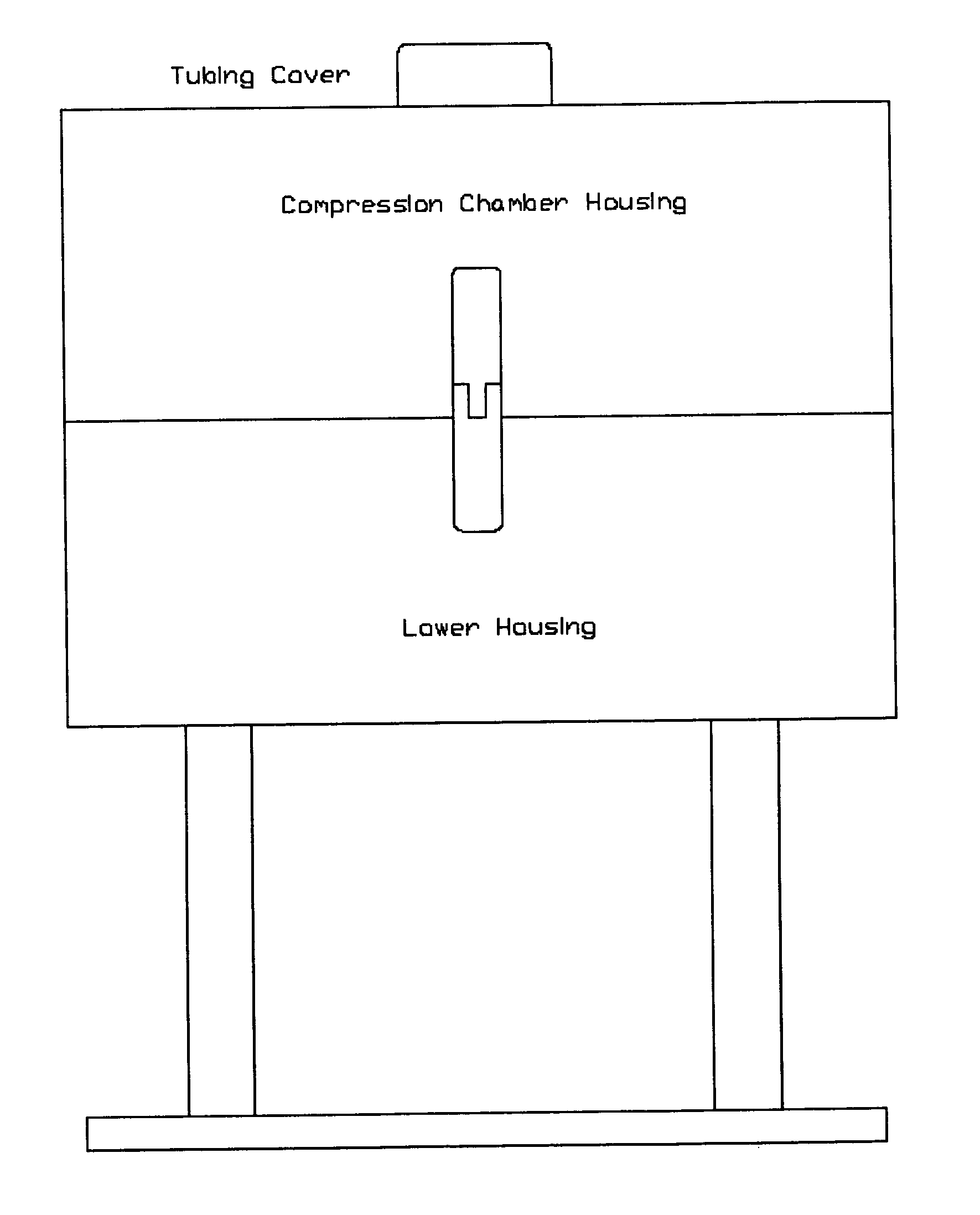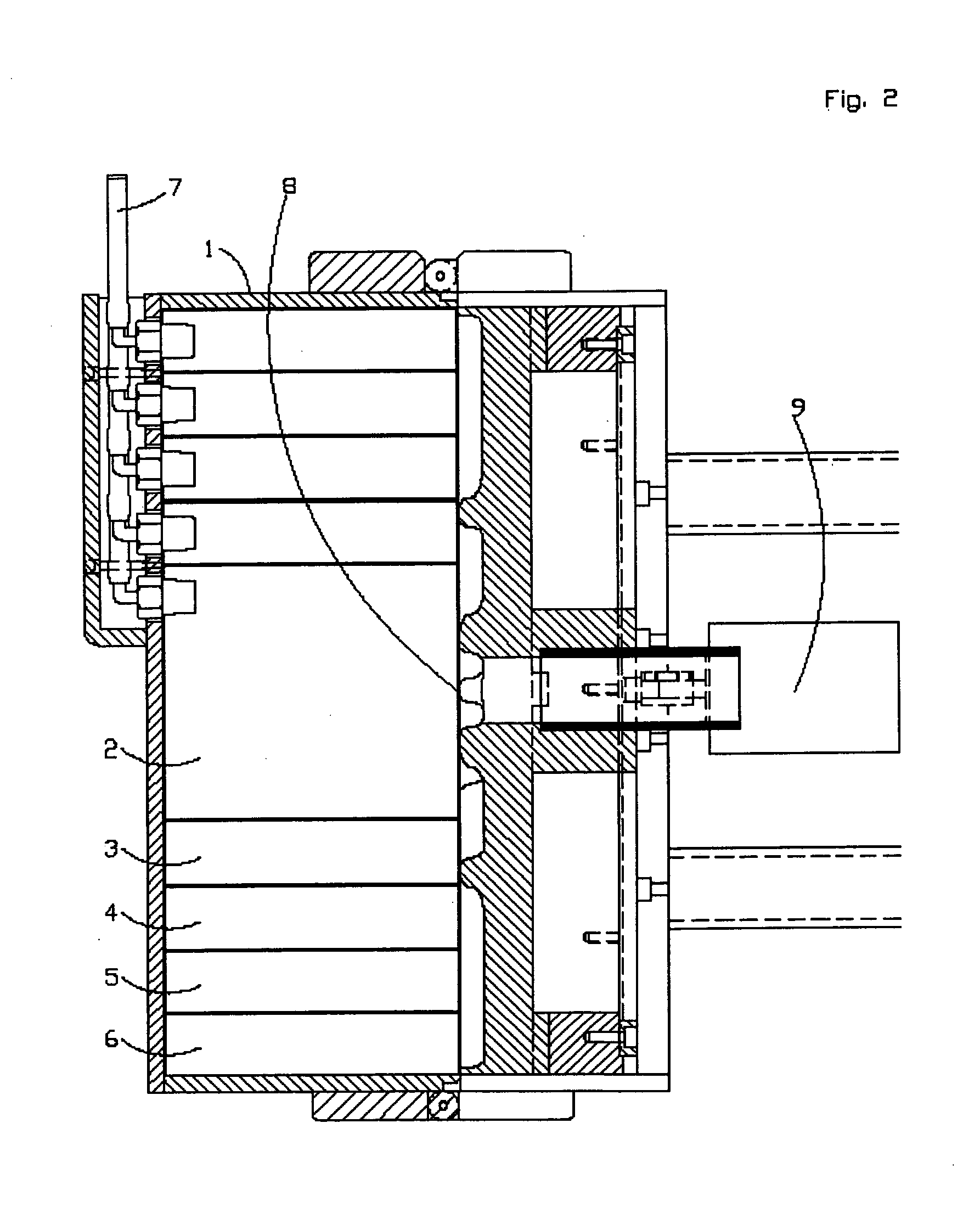Placental blood extractor
a placental and blood extraction technology, applied in the field of medical instruments, can solve the problems of not being practical, affecting the practicality of collection, and a small amount of collected blood, so as to minimize the handling of placentas, reduce pressure, and minimize the possibility of contamination
- Summary
- Abstract
- Description
- Claims
- Application Information
AI Technical Summary
Benefits of technology
Problems solved by technology
Method used
Image
Examples
Embodiment Construction
[0033]The instant invention, a Placental Blood Extractor (PBE), for collection of the umbilical and placental blood has a simple operation. It is composed of the Placental Blood Extractor (PBE) and the Collector of Blood (COB). The entire system is composed of some easily maintained parts.
A. The system consists of:
[0034]The outside firm plastic box is round in shape (FIG. 1, FIG. 10, FIG. 11, FIG. 12), and depending if only one type of this box should serve all processed placentas, then being larger, or if more PBEs are produced for different sizes of the placentas, then different sizes may be selected. Thus, this box may be from six to twelve inches in outside diameter. The box has two parts, the upper and lower parts which are to be closed when placenta is placed in this box and the operation is to start. The lower part has an opening where the umbilical cord is lead outside of the box.
1. Plastic soft compression bags lining the upper portion of the above described outside box (FI...
PUM
 Login to View More
Login to View More Abstract
Description
Claims
Application Information
 Login to View More
Login to View More - R&D
- Intellectual Property
- Life Sciences
- Materials
- Tech Scout
- Unparalleled Data Quality
- Higher Quality Content
- 60% Fewer Hallucinations
Browse by: Latest US Patents, China's latest patents, Technical Efficacy Thesaurus, Application Domain, Technology Topic, Popular Technical Reports.
© 2025 PatSnap. All rights reserved.Legal|Privacy policy|Modern Slavery Act Transparency Statement|Sitemap|About US| Contact US: help@patsnap.com



